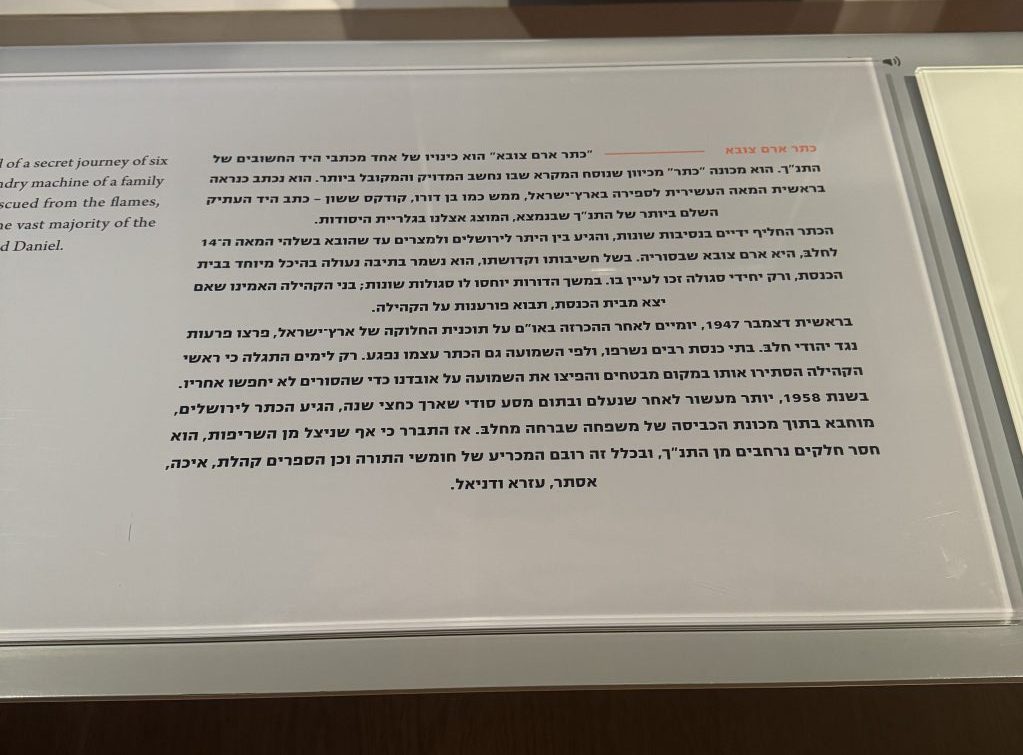Text Panel
The Aleppo Codex is one of the most important manuscripts of the Hebrew Bible. It is called a ‘keter’ (‘crown’) because the Biblical text it contains is considered the most precise and authoritative. It was evidently written in Eretz Yisrael in the early 10th century, like its contemporary, Codex Sassoon—the earliest, most complete Hebrew Bible extant, which is on display here in the ‘Foundations’ Gallery.
The Aleppo Codex changed hands under different circumstances, reaching Jerusalem, Egypt, and other places until arriving in Aleppo at the end of the 14th century. Due to its importance and sanctity, it was safeguarded in a locked box within a special sanctuary in the synagogue. Only select individuals were allowed to study it. Over the generations, various special powers were ascribed to it, and members of the community believed that if it leaves the synagogue, catastrophe would befall the community.
In early December of 1947, two days after the UN adopted the Partition Plan for Palestine, riots broke out against the Jews of Aleppo. Many synagogues were burnt down, and according to rumor the codex was harmed. A few days later it was revealed that community leaders had hidden it in a safe place and spread the rumors of its loss so that the Syrians would not search for it.
In 1958, more than a decade after its disappearance and at the end of a secret journey of six months, the Aleppo Codex arrived in Jerusalem, hidden in the laundry machine of a family fleeing from Aleppo. It then emerged that even though it was rescued from the flames, it was missing extensive sections of the Hebrew Bible, including the vast majority of the Pentateuch, Ecclesiastes, Lamentations, Esther, Ezra, and Daniel.

